From the TC 372 Workshop Compendium
Determining the event type
Like most other intellectual or artistic creations, audiovisual works can undergo many stages of realisation, usage, modification and re-use. Introducing the concept of event allows us to capture details about these stages as machine-processable metadata.
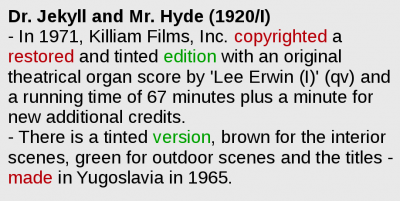
From: Internet Movie Database Plain Text Data File alternate-versions.list, downloaded 02-Oct-2009.
|
Most current cataloguing systems for cinematographic works do not have data elements for events. Instead, statements about events are typically written into note fields.
The text on the left is from such a note field, created by the designers of the IMDb for remarks about alternate versions.
|
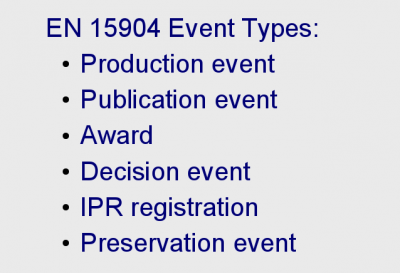
|
EN 15907 defines six types of events for describing occurrences in the lifecycle of a cinematographic work.
An event is characterised by time (however imprecise or unknown) and a location (however imprecise or unknown). It can be associated with agents (i.e. people, corporations), artifacts, or whatever may be of interest in its context.
Note the absence of a destruction event, following FIAF's motto, Don't throw away film.
|
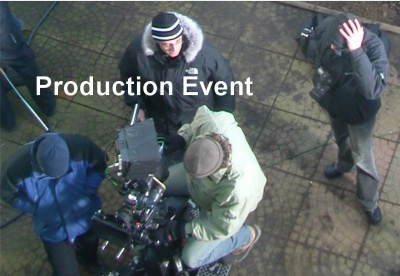
Photo: Detlev Balzer, 2005
|
A production event typically encompasses the shooting of a film and all subsequent stages of production and post-production.
Any activity that creates a new variant or manifestation of a cinematographic work can also be described as a production event.
|
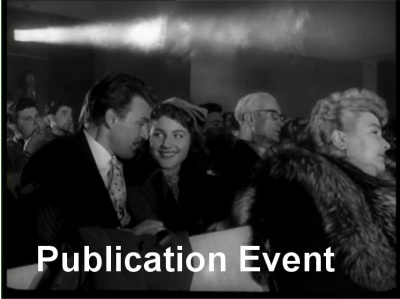
From: I Vitelloni (directed by Federico Fellini), 1953
|
Publication events encompass all kinds of public exhibition including premieres, festival screenings, TV broadcasts, etc.
Publication on a carrier such as DVD, or on-line releases, also count as publication events.
|
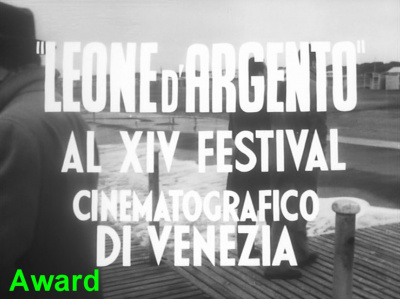
From: I Vitelloni (directed by Federico Fellini), 1953
|
Awards are modelled as events because their bestowal occurs at a specific time. Awards are often associated with other events such as film festivals.
An award can be specific to a person and/or to a particular achievement. It can also be specific to a particular version or manifestation.
|
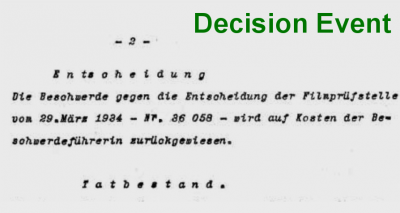
From: Film-Oberprüfstelle Berlin, Record No. 7324 of 21-Apr-1934, kept at Deutsches Filminstitut, Frankfurt am Main.
|
Decision events cover all acts of censorship and all decisions made by agencies under a voluntary rating scheme.
Decisions are usually specific to a particular manifestation of a cinematographic work. They can also give rise to a new variant in cases where the decisison results in significant changes in the content of the public release.
|
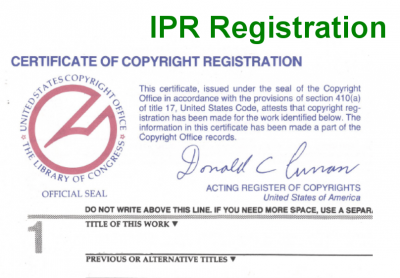
|
Some countries have (or had) registration schemes for intellectual property rights, applicable to moving image works.
EN 15907 defines this event type for cases in which such registration is known.
|
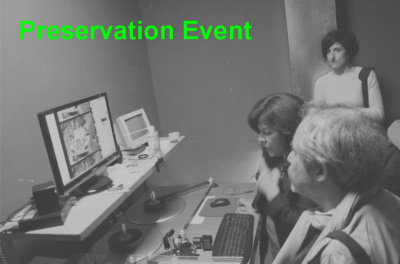
|
This class of events comprises activities that are ususally based on a single copy. Preservation events can produce a new copy, or a new manifestation if the resulting copy is used as a master for duplication.
In cases where different fragments are combined in order to reconstruct a cinematographic work, this should be regarded as a production event resulting in a new variant.
|
Describing and using event information
Describing an event largely follows the famous five Ws (Who, What, Why, When, Where) of journalism (and, indeed, many other kinds of writing). Separating these facets into appropriate metadata elements enables machines to provide us with more useful and interesting ways of accessing and evaluating filmographic data.
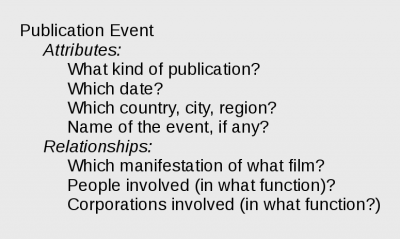
|
Events are interesting if we know some of their properties that can be expressed as attributes or relationships.
An attribute is similar to a traditional data field, in that it can hold values expressed as text, numbers, calendar dates, etc.
A relationship connects an instance (in this case: the event) with instances of other entities such as a manifestation or an agent.
|

Query performed on the central filmography database of Deutsches Filminstitut (DIF), 04-Oct-2010
|
This is the result of a real database query based on publication events.
Evidently, this will only retrieve film works for which some publication event is known with date and place.
|

Query performed on the central filmography database of Deutsches Filminstitut (DIF), 04-Oct-2010
|
Another database query based on events, in this case, on awards given at the Locarno International Film Festival.
Using such database queries, any suitable data element can be turned into what librarians call an access point.
|
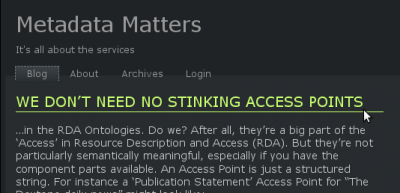
From: http://managemetadata.org/blog/2009/11/03/we-dont-need-no-stinking-access-points/ Accessed: 21-Sep-2010.
|
The notion of access point has indeed become a subject of debate in the cataloguing community.
Suitably designed databases can offer any number of access points for locating resources. Exploring a collection via relationships opens up paths of discovery that cannot be foreseen during the cataloguing process. Relationships with events are particularly useful here since events can act as nodes to which dissimilar resources can be connected via relationships.
|











